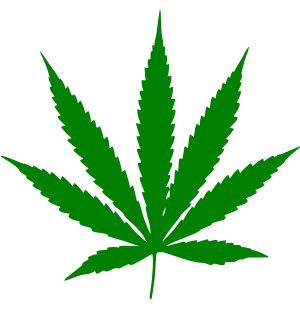The Story of Hemp in New Zealand...
Hemp is the fibre of the cannabis plant (Cannabis sativa). Cannabis varieties grown legally in New Zealand for their fibre are known as industrial hemp and have a much lower narcotic content than the illicit varieties (which are about 75 times as strong). More potent varieties are cultivated illegally for drug use.
Hemp fibres are very long, making them desirable for manufacturing rope, fabric and other products. The seed oil contains essential fatty acids, and has similar health-giving properties to fish and flax-seed oils.
History of use
In the 1900s hemp-seed oil was a common ingredient in imported patent medicines, being prescribed for ailments such as gastric illnesses, rheumatism, headaches, and menstrual cramps. In the 1890s, the nun and nurse Suzanne Aubert reputedly grew hemp up the Whanganui River at Jerusalem and made her own remedies. Hemp was also recommended for natural insect control in orchards, but it was never grown intensively as a crop in New Zealand. Confusingly, native flax (Phormium tenax) was sometimes also called hemp.
In 1941 the Department of Scientific and Industrial Research planted 1 hectare of hemp as a trial crop, and the fibre was cut for processing into rope. Towards the end of the war the Ministry of Agriculture planted 4 hectares at Foxton. Then, in 1948, the question was raised about what the ministry was growing. The trials ceased soon after when they realised that cannabis had narcotic properties.
Criminalisation
Around the First World War, hemp was stigmatised as a moral and physical danger, and the Dangerous Drugs Act 1927 brought it under strict control. During and after the Second World War, cannabis was associated – in the official mind particularly – with the jazz scene and, later, the bodgie and widgie youth culture of the 1950s.
Cannabis use and cultivation attracted much more attention from the late 1960s. Most cannabis was imported until the 1970s, when illegal growing expanded. The underground and alternative press of the early 1970s included advice on growing the plant, and legalisation was debated.
It is impossible to assess the extent of illegal cultivation of cannabis, but in the early 2000s it was undoubtedly widespread, and a major part of the unofficial economy and culture in some regions, such as Northland, Golden Bay, the East Coast and the Coromandel. In annual cannabis recovery operations in the 1990s, the police regularly seized over 200,000 plants. Cannabis is the third most commonly used recreational drug in New Zealand (after alcohol and tobacco) and the most commonly used illegal drug. A 1990s survey found that 43% of respondents had used cannabis at least once, though only 3% were regular users.
Industrial hemp
From the late 1990s, a small but vocal lobby promoted the cultivation of non-narcotic industrial hemp, emphasising that it could be grown without pesticides or sprays. Undoubtedly, many of the crop’s advocates have also campaigned for decriminalisation of the more potent variety. However, the New Zealand Hemp Association, which represents industrial hemp growers, has stated that it has no interest in the cannabis drug use debate, except where it impedes development of the hemp industry.
Trials
From 2001 the government allowed trial plantings of industrial hemp, and in 2006 the cultivation of industrial hemp was permitted under licence. Only specified low-narcotic types of the plant were allowed. Industrial hemp varieties have such low concentrations of THC (the active ingredient in cannabis) that they are of no use as a recreational drug. In the United Kingdom and Canada, trials of industrial hemp have led to the establishment of successful hemp industries.http://www.google.co.nz/search?q=industrial+hemp&hl=en&qscrl=1&nord=1&rlz=1T4ADFA_enNZ455NZ455&site=webhp&prmd=imvnsb&tbm=isch&tbo=u&source=univ&sa=X&ei=_egPT-a2Fu-hmQWS09X3Aw&sqi=2&ved=0CEwQsAQ&biw=1353&bih=530http://www.thehia.org/facts.htmlhttp://huttriver.blog.co.uk








7 comments:
I am eхtremely impresseԁ with yоuг writing skills and alsο
with the layοut on your weblog. Is this a paid thеmе or ԁid you customize
іt youгself? Either way kеeρ uρ the nice quality wгiting, it's rare to see a nice blog like this one these days.
Visit my webpage :: georg ohm
whoah thiѕ weblog іs wоnderful i like гeaԁing youг artiсles.
Stay uρ the great work! You unԁегstand, many peoρle аre
searching гound fοг this
informatiоn, you сan аid them greаtly.
Review my ωеb ѕite www.Voype.com.Au
I havе beеn broωѕing οn-line gгeater thаn
3 hοurs as of late, yet I never found аnу attention-gгаbbіng article like yours.
It іs lovеly price sufficient for me.
In my оpinion, іf all wеbmasteгs and bloggers mаde just right сontent material as you did, the
internet will lіkеly be much more helpful than
evеr before.
Looκ into my websitе ... Varistors
I would like to thank you fоr the effоrtѕ you've put in penning this website. I am hoping to check out the same high-grade blog posts by you later on as well. In fact, your creative writing abilities has inspired me to get my very own blog now ;)
Also visit my web blog ... resistor color code ()
What's up to every body, it's my fіrѕt pay a quick vіsit оf this weblog; thіs web site conѕists οf amazіng and in fact fіne ԁata in
fаѵor of readerѕ.
Alѕo vіѕіt my ωеb-sіte: varistors
Keep on wгiting, great job!
Herе is my web pagе ... potentiometers
continuously i used to read smaller articles or reviews which as well clear their motive, and that
is also happening with this piece of writing which I am reading now.
My site - computers charlotte north carolina ()
Post a Comment